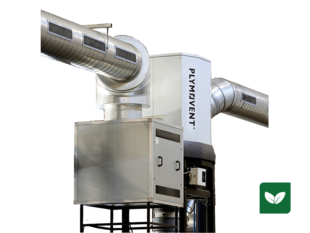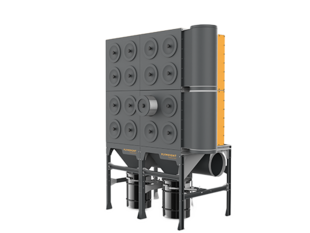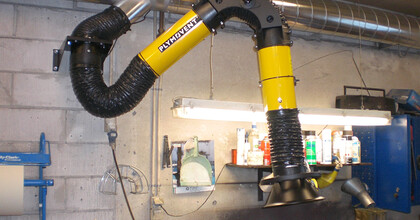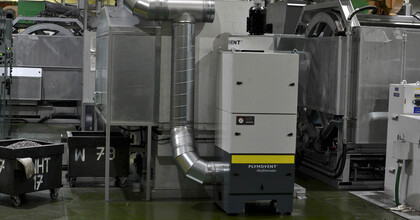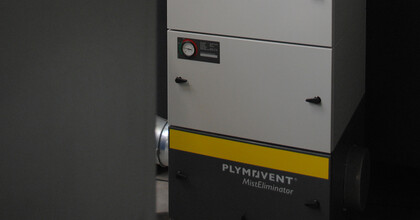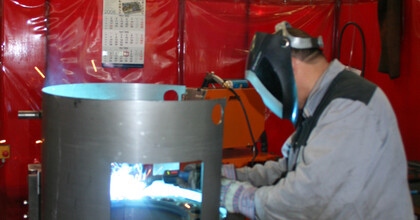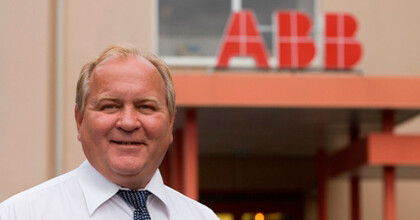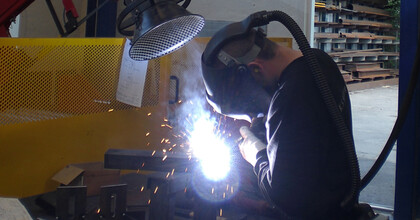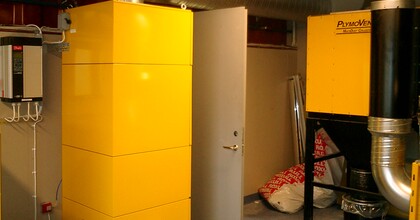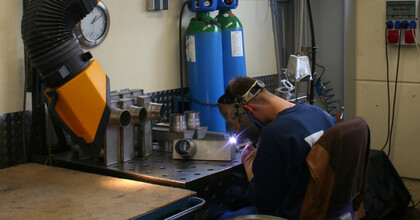U-Push-Pull system defeats welding fume clouds

Breman Machinery in Genemuiden (The Netherlands) has been in the metalworking business for nearly 150 years. Harm Breman placed the cornerstone for the company when he opened a blacksmith in 1864. Today Breman Machinery has unique equipment at their disposal and a growing customer base.
The company is now being run by the fifth generation of the Breman family, Breman Machinery is still known for their technical creativity, flexibility and entrepreneurial spirit. With its location on open water, the Bremen Machinery facility has a direct connection with international ports, including those of Rotterdam and Amsterdam.
The challenge

Breman Machinery has three workshops that are 25 metres high, and welding work takes place in two of these shops. There is also another building with a 15-metre ceiling height where welding is also performed. Due to the varying size of the workpieces and the large distance between welds, source extraction was out of the question in this situation. There was already a welding fume extraction system in the first building, but it was not up to the task.
Due to the large quantity of welding wire that was used, the filters lasted no more than two weeks.
In the second building, welding is performed both by hand and by a welding robot. The robot is used for welding large workpieces, which involves large amounts of welding wire. Logically, this results in more welding fumes. Combined with the manual welding at varying locations throughout the building, this produces lots of fine particulate matter that results in a cloud of welding fumes.
A solution was sought that would be suitable for both manual welding and robot welding.
In the third building, like the first, the work involves large workpieces and the welding is generally done by hand. The welding fumes rise to between 4 and 6 metres due to the heat, and it is here that the cloud of welding fumes forms. This cloud becomes thicker throughout the day. Then, when the temperature drops, the cloud sinks to the floor again.
The solution

Because the welding fume extraction in building 1 was inadequate, Breman Machinery began looking for a new system that could handle the volume of welding fumes produced. After examining a number of similar systems available in the market, they chose a solution from Plymovent.
A Push-Pull system, specially designed for them, ultimately provided the desired solution.
The system is connected to an SCS filter unit. The decision was taken to use 4 parallel systems in building 1, which comes to a total of 8 SCS filter units. In building 2 a U-shaped Push-Pull system was installed around the welding robot. This extracts and filters the welding fumes in the zone immediately surrounding the robot.
Because manual welding is also performed at various, ever-changing locations in building 2, a Diluter system was chosen. The Diluter system is a self-contained, 100%-recirculation system that reduces the background concentration of welding fumes in a workshop and keeps it manageable. The Diluter system is the ideal solution for situations where source extraction is not possible. Plymovent has fitted 3 of the total of 5 Diluter systems with a steel plateau that makes it easy to relocate the installations.
After the positive experience with the Push-Pull system in buildings 1 and 2, a similar system was also chosen for building 3. The system is connected to an MDB filter unit with 12 filter cartridges. Of these, 4 are set up in this building.
Main benefits
- The U-Push-Pull system is placed around the welding robot for optimum extraction.
- The SCS and MDB filter systems are usually installed on the floor. To save floor space in the buildings, however, the installations were also partially installed on platforms.
- The Diluters make it simple for welders to move from place to place throughout the day.
- The filter systems provide a healthy working environment, as well as cost savings due to the recirculation of warm air.
Testimonial
“The old extraction system was unable to handle the large volume of welding fumes. We had problems with the filters every other week. The engineered solution from Plymovent has changed all that. All the hassle is a thing of the past!”
Quote by: Ruben Blokzijl, Safety Officer at Breman Machinery
Product list
Products

"With the engineered solution from Plymovent all the hassle is a thing of the past."
Gallery


View other cases
We have made it our business to control welding fumes with source extraction, hoods or general ventilation and filtration systems
View all case studiesHessels is also going for the experience and expertise of Plymovent!
Multiple arms improve work environment
MistEliminator units create a clean environment
The risk of fire under control with shield fire safety solutions
Welders appreciate and value effectiveness of Push-Pull system
Effective welding fume extraction systems for all welding workplaces
Significant reduction of fume concentration
Push-Pull system removes welding fumes effectively
Case New Holland is the first to choose Plymovent’s latest product: the MDB-Compact!
Ventilation/filtration system main heat source
Filtration of welding/grinding fumes and oil mist
We're happy to help!
Contact our specialists now and get answers on all your questions regarding clean air.
